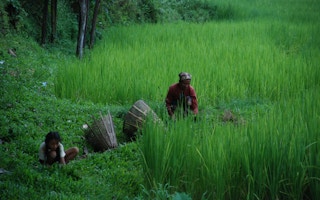About one-third of the world’s working population is employed in the agriculture sector, which includes fisheries and forestry. Workers in these sectors face hazardous conditions. On a daily basis they may be expected to encounter toxic pesticides and fertilisers, potentially dangerous machinery, excessive noise and extreme weather. Weak or non-existent enforcement of agricultural health and safety standards exacerbates the situation for workers, who are often hired informally and have little or no voice.
Agricultural employees are regularly exposed to heat stress, since they often work outdoors in hot temperatures, especially in developing countries. In moderate cases, this produces severe dehydration and fatigue, including symptoms of giddiness, nausea and headache. In severe cases, the result can be fatal.
Among agricultural sectors, forestry is probably the most hazardous, though statistics are inadequate. Information available indicates that forestry accidents claim a high toll of injuries and deaths each year, particularly as the work often involves wielding heavy machinery and cutting equipment in remote areas and on difficult terrain. An even greater number of forestry workers are estimated to be affected by insect-borne disease, as well as by hearing loss, repetitive stress syndromes, and cumulative damage to joints and backs. Harvesting of non-wood forest products often involves climbing trees and using cutting tools.
The human cost aside, the high incidence of agricultural workplace accidents can be a serious threat to livelihoods, especially for vulnerable households. Agricultural workers facing dangerous conditions tend to be less productive and risk their health, which may trap them and their families in poverty.
Yet all too often, occupational health and safety measures for those working in agriculture are ignored. A study that examined the effect of heat stress on rice harvesters in Asia reveals a familiar pattern – labourers working extremely long hours in high temperatures for very low pay, in this case US$2.40 per day, with inadequate food or clean drinking water. As the day wore on and heat stress set in, their rate of productivity declined. Another study of African forestry workers showed that those who did not consume food or drink during the shift lost 3 per cent of their body weight, an average 1.8 kg. Even in temperate conditions, such a loss implies a reduction in productivity of 70–75 per cent.
So what can we learn from these findings? That heat and dangerous conditions have to be managed, and that it is in the interests of both employers and employees to ensure that health and safety procedures are followed, and that work is organised in a way that takes risks and health hazards into account.
Two new publications from FAO highlight the physical dangers of working in agriculture. Managing heat in agricultural work: Increasing worker safety and productivity by controlling heat exposure examines the risk of heat stress to agricultural workers, while Accident reporting and analysis in forestry: Pathway to increasing the safety of forest work explores the high incidence of serious injury for those engaged in forestry, and proposes ways to manage and learn from accidents.
“
Weak or non-existent enforcement of agricultural health and safety standards exacerbates the situation for workers, who are often hired informally and have little or no voice.
Some of the content makes grim reading, but both highlight the scope for greatly reducing heat stress in agriculture and forestry-related accidents with proper work organisation, awareness-raising and training for employers and employees. In all agricultural sectors, the cost of accidents hugely exceeds that of preventive efforts, such as ensuring that employees are informed about occupational safety, and providing safe equipment, fluids and protective clothing where necessary.
It is important to acknowledge that work supervision should also take account of workers’ cultures, especially in the case of vulnerable immigrant labourers. Studies of Latino farmworkers in California revealed that they would not necessarily drink the fluids provided or take the rest breaks, probably because their culture required them not to show weakness.
It is only right that the people engaged in providing food, shelter and a host of other benefits for the rest of the world be allowed to do so with dignity and in safety.
Sheila Wertz-Kanounnikoff is Senior Forestry Officer in the Forestry Department of the Food and Agriculture Organization of the United Nations. This story was published with permission from Thomson Reuters Foundation, the charitable arm of Thomson Reuters, that covers humanitarian news, women’s rights, corruption and climate change. Visit news.trust.org.











